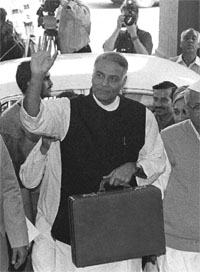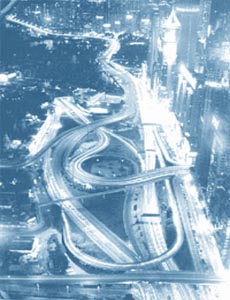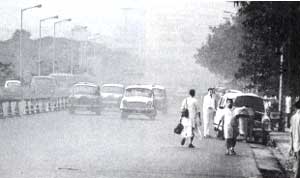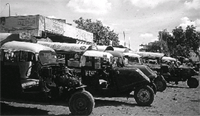Some of the major airlines of the world seem to be lately realizing the adverse role of their big passenger jets on climate changes resulting in emissions of carbon dioxide and other greenhouse gases from the engine-exhausts into the earth's atmosphere. In this context Virgin Atlantic's first flight of a commercial aircraft powered with biofuel from London to Amsterdam on February 24, 2008 to show it can produce less carbon dioxide than normal jet fuels was an appreciable endeavour. This particular flight was partially fueled with a biofuel mixture of coconut and babassu oil in one of its four main fuel tanks and is expected to produce much less CO2 than regular jet fuel. Since aircraft engines emit gases and particulates that reduce air quality, spearheading the test flight was indeed a potentially useful experiment aimed at cutting down emission of greenhouse gases. A few weeks prior to this, an airbus A 380 too had taken off on a similar test sortie, powered on a blend of regular fuel and liquid fuel processed from natural gas with the hope that the super jumbo will become a centerpiece of efforts to develop the next generation of cleaner fuel. Besides, Air France-KLM is reported to invest almost US$3 billion a year until 2020 to modernize its fleet with the aim of cutting pollution. Several other airlines have also pledged to clean up their fleets as fears about global warming and fuel costs have mounted. Usually, people form their opinion on the adverse impact of air pollution by observing petrol and diesel-driven vehicles leave harmful trails of smoke on the roads. However, the great damage being done by thousands of air turbine fuel (ATF) guzzling aeroplanes that release tonnes hazardous fumes into our biosphere daily goes unnoticed. The increasing size of aircraft, the emission of black smoke during take-off, and the density of air traffic at major airports, have drawn environmentalists' attention to pollution by aircraft. A loaded jumbo 747, for instance, uses tens of thousands of litres of fuel on merely take-off. Further pollution by aircraft arises from the jettisoning of spare fuel after being airborne. Under such circumstances, it must be released at a height sufficient to allow it to vaporize so that it does not reach the ground in liquid form. Commercial jet planes make a significant contribution to the problem of global warming. According to a UN report, aviation is responsible for over half of the pollution caused by transportation on the surface. Scientists estimate that the effect of aviation emissions on the climate is up to five times the impact of emissions occurring on the ground. The primary gas emitted by jet aircraft engines is carbon dioxide, which, scientists believe, can survive in the atmosphere up to 100 years. It means denying the coming generations from living in a world where they can breathe clean air, enjoy diverse ecosystems and eat healthy food. In India the number of passenger and freight aircraft flown by private airlines is fast multiplying. Similarly, the Indian Air Force, currently in aircraft acquisition mode, is likely to increase its flying operations in the coming years. Its increasing use of supersonic combat aircraft flying at high altitudes may lead to increasing pollution of the upper air, where pollutants may accumulate since natural dispersion at such heights is not very effective. This development is going to be a major contributory factor in the destruction of ozone and the accumulation of green house gases in the upper layers of the atmosphere. It is estimated that one multi-engine passenger aircraft is being added every fortnight to the fleets of India's domestic carriers that are engaged in cutthroat competition to fly to the remotest corners of the country. As a result, the number of aircraft flying the Indian skies has gone up considerably. Here, one must not forget the domain of military aviation, Air Force, Army, Navy and the coast guard, where more than 1,000 fighter jets, transport planes and helicopters are kept aloft in routinely scheduled day and night flying. As per the estimates, the movement of aircraft in Indian airspace is growing at an annual rate of 15 per cent. Incidentally, kerosene happens to be the principal component of ATF. It is used as a propellant in modern commercial as well as military aircraft. Like other fossil fuels, kerosene produces carbon dioxide and water vapour on combustion. As the combustion process can not be said to be entirely efficient, carbon monoxide and oxygenated organic compounds, that are the products of partial oxidation, are emitted into the upper layers of the atmosphere. Hence, the extremely harmful environmental impact of pollutants left behind by aircraft engine exhaust fumes should be a great cause of concern for enlightened citizens. Though the International Civil Aviation Organisation (IACO), a UN body is reportedly supposed to regulate aircraft engine emissions by setting emission certification standards for all aircraft but it more or less appears to be an exercise on paper. In December 2007, the UN Climate Conference in Bali, Indonesia negotiated a new climate policy to chart out long term goal for global green house gas emissions. The world will not be able to realise these objectives unless technological breakthroughs are achieved in drastically reducing exhaust emissions from commercial as well as military aircraft gas turbine engines. This will necessitate a global effort in finding alternative jet fuels and developing engines that burn existing fuels more slowly.








